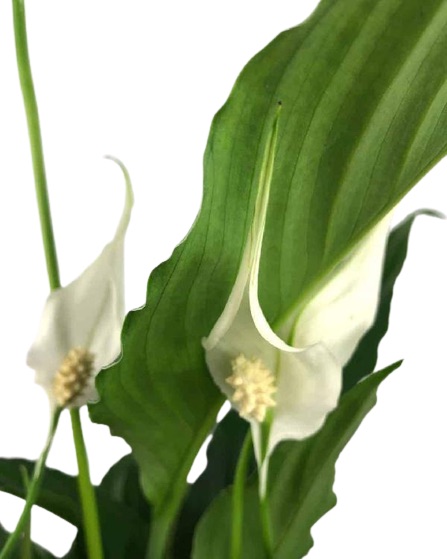characteristics and care Spathiphyllum Wallasii
Spathiphyllum Wallasii
technical name:
Spathiphyllum Wallasii
common name:
Peace Lily, Peace Lily, or White Flag
family:
Araceae
source:
tropical jungles of south america
Location:
Interior
pet friendly:

Learn with Jordi the gnome
Spathiphyllum Wallasii
My grandmother always told me stories and legends about Peace Lily, from wars that have ended with an exchange of these plants, to lovers who have become engaged to them. That's how I justified why they call it Peace Lily. Whether these stories are more or less true, the truth is that this plant has very powerful benefits: it is an air purifier and humidifier, which can even replace artificial purifiers. Also, it helps reduce the anxiety levels of those around you, helping them sleep better. Now I understand why my grandmother always had it at home!

como cuidar la Spathiphyllum Wallasii
light and temperature
This plant is more resistant than it seems, but if you want to enjoy all its beauty, you should pamper yourself a little. Although it can survive in the darkest corners of the house, it is recommended that it touches the sun indirectly, since this way it will grow with all its splendor without the risk of its leaves and flowers burning. And that is exactly what matters! The Espatifilio is a crazy lover of hot climates. That is why it should be located in a space that is between 16º C and 21º C, so that it feels at home (it would only need a little juice in a coconut, with a straw and an umbrella, and you would not even notice the difference ).
irrigation, fertilization and transplant
The Peace Lily is like that friend who eats without stopping and is still very slim, only instead of food, it is with water. It should be watered frequently to keep the substrate always moist, especially in the hottest months. Careful not to drown her, of course! Being a tropical plant, it is very grateful if a little water is sprayed from time to time. So that the flower looks very beautiful, it is recommended that during the hot season it be fertilized every fifteen days. Being a tropical plant, it should be transplanted when it feels most comfortable: with the arrival of good weather. Thus, when one begins to remove the coats, it is the best time to transplant it. Personally, I recommend doing it once a year.
diseases and pests
It seems that there are those who are envious of the beauty of this plant and decide to go for it... The red spider, mites, aphids, whiteflies or fungi are some of its most common enemies. But there is no bug that resists my grandmother's miraculous remedy: spray it with a mixture of onion, garlic, alcohol and vinegar. Goodbye little undesirables!
Jordi's notes
What a heart attack I had! One day, arriving at my grandmother's house, I saw that the Peace Lily flower had turned green. Although this one was just as pretty as the white flower, I was shocked by the unexpected color change. At first I thought my grandmother, in a fit of boredom, had painted it. But before asking for an explanation, I did some research, and discovered that this change in color is normal when the flower is pollinated and is in the process of maturing. How curious! Seeing its long and beautiful white flower against the blue sky, it undoubtedly makes me think of the flag of Honduras. In her honor, I'm going to call her that.